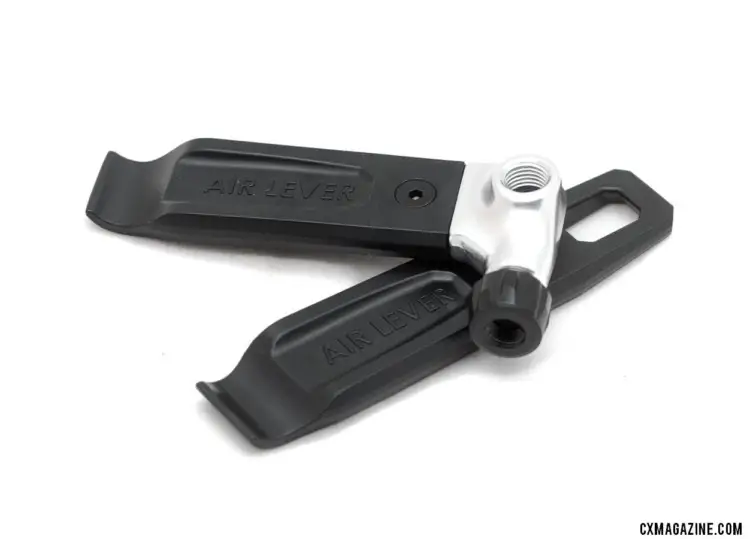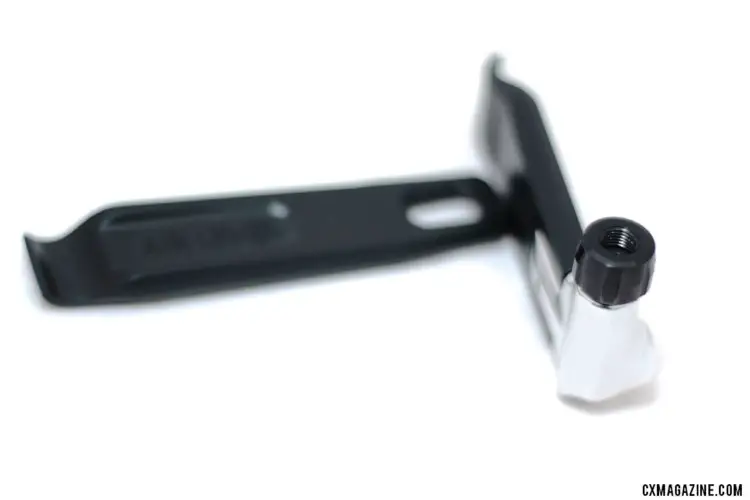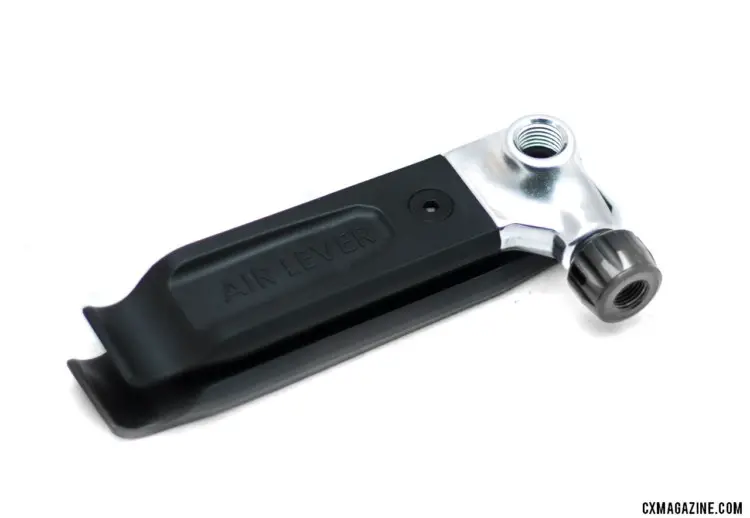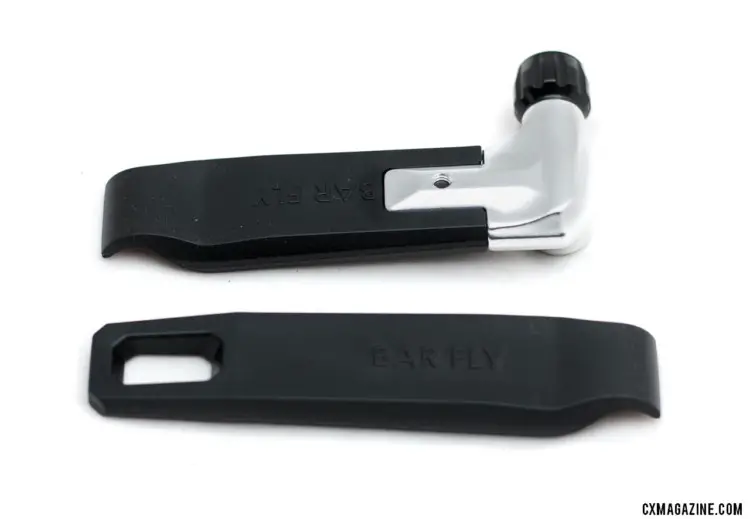CO2 cartridges are an appealing option for tubeless tire re-inflation since they quickly deliver a blast of air and create a vacuum at the point of puncture to draw sealant in to seal it. At the same time, you may still need a tire lever to get your tire re-seated.
The Bar Fly Air Lever is a new product that combines the two tools into one. The Air Lever package comes with two levers; one is a standard tire lever and the other has a tire lever on one end and a threaded CO2 cartridge inflator on the other.
[caption id="attachment_117558" align="aligncenter" width="750"] The Air Lever system comes with a CO2 inflator with a regulation nozzle built into one of the levers. Bar Fly Air Lever with built-in CO2 inflator. © Cyclocross Magazine[/caption]
The Air Lever system comes with a CO2 inflator with a regulation nozzle built into one of the levers. Bar Fly Air Lever with built-in CO2 inflator. © Cyclocross Magazine[/caption]
The threaded CO2 inflator has a port for attaching your CO2 cartridge and a Presta and Schraeder-compatible nozzle that allows the user to regulate the release of air using a dial. Tubeless tires do not always go completely flat, so the design allows you to get the proper amount of air into your deflated tire.
[caption id="attachment_117559" align="aligncenter" width="750"] The nozzle on the CO2 inflator allows you to control the release of air. Bar Fly Air Lever with built-in CO2 inflator. © Cyclocross Magazine[/caption]
The nozzle on the CO2 inflator allows you to control the release of air. Bar Fly Air Lever with built-in CO2 inflator. © Cyclocross Magazine[/caption]
It also means you might get multiple uses out of one CO2 cartridge. However, during our testing, we found storing the Air Lever with a partially used cartridge in a saddle bag was difficult to impossible since the cartridge extends perpendicular to the lever. Regulation nozzles are increasingly common on CO2 inflators, but we found screwing in the canister, loosening and tightening the nozzle on the Air Lever was slower than a trigger-based system.
The levers themselves are thick and sturdy and slide under even tight beads with relative ease. They do not snap together like many levers, which is a design feature we think Bar Fly could incorporate into the design of the plain lever.
[caption id="attachment_117560" align="aligncenter" width="750"] The two levers do not snap together, which is something we would have liked to see. Bar Fly Air Lever with built-in CO2 inflator. © Cyclocross Magazine[/caption]
The two levers do not snap together, which is something we would have liked to see. Bar Fly Air Lever with built-in CO2 inflator. © Cyclocross Magazine[/caption]
The Bar Fly Air Lever system has an MSRP of $29.99 and a measured weight of 63 grams for the pair, which is in line with what we would expect for a combination of the two products.
See the information and photo gallery for more on the Bar Fly Air Lever. For more gravel gear, see our Gravel Gear archives.
Andrew Yee and Zachary Schuster contributed to this report.
Bar Fly Air Lever System Information
Price: $29.99
Weight: 63 grams
Valve Compatibility: Presta and Schraeder
CO2 Cartridge: Not included
More Info: barflybike.com
Photo Gallery: Bar Fly Air Lever System



























